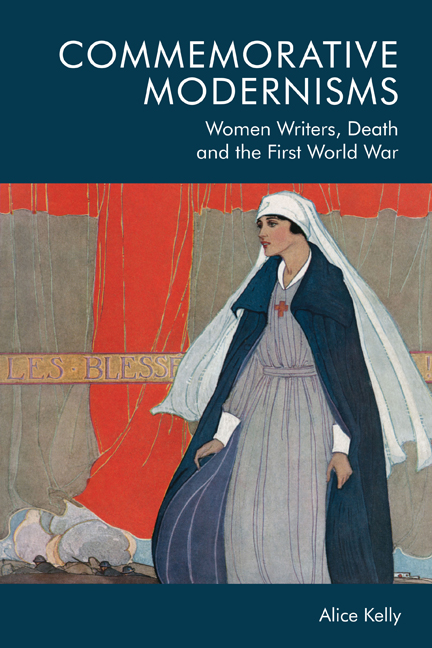Book contents
- Frontmatter
- Contents
- List of Figures
- Acknowledgements
- Dedication
- Introduction: A Culture Surcharged with Death
- Part One Death in Proximity: Wartime Commemorations
- Part Two Grief at a Distance: Civilian Modernisms
- Part Three Modernist Death: Postwar Remembrance
- Conclusion: Modernism’s Ghosts
- Bibliography
- Index
4 - The Civilian War Novel: H.D.’s Avant-Garde War Dead
Published online by Cambridge University Press: 15 October 2020
- Frontmatter
- Contents
- List of Figures
- Acknowledgements
- Dedication
- Introduction: A Culture Surcharged with Death
- Part One Death in Proximity: Wartime Commemorations
- Part Two Grief at a Distance: Civilian Modernisms
- Part Three Modernist Death: Postwar Remembrance
- Conclusion: Modernism’s Ghosts
- Bibliography
- Index
Summary
The American imagist poet and novelist H.D. (Hilda Doolittle) was profoundly affected by the Great War, suffering the wartime stillbirth of her and her husband Richard Aldington's ‘own sweet dead baby’ in May 1915, the death of her brother Gilbert in combat in France in October 1918, and the subsequent death of her father from a grief-related stroke in March 1919. Originally from Bethlehem, Pennsylvania, she had lived in London since 1911 where she was active in the imagist circle of writers and poets. H.D. was not formally involved in the war in any capacity, but experienced air raids in London and the breakdown of her marriage as a result of her husband's presence at the front. H.D.'s belief that the stillbirth of her daughter was a direct result of ‘shock and repercussions of war news broken to [her] in a rather brutal fashion’, that ‘[k]haki killed it’, became her mode of identification with, and participation in, the scene of mass death around her.
H.D. was the furthest removed from the war of the writers I examine, both spatially and temporally. Already an experimental writer before the war, H.D. – removed from the war in both spatial and temporal terms – provides the most abstract fictional representation of the war dead. In Bid Me to Live (A Madrigal) (begun 1918, but not published until 1960), her novel focusing on the wartime period, H.D. represents the civilian war experience: the ways the war permeated home front life, changed perceptions of time and death, and placed heavy emotional burdens on the women at home. There is no death scene or war corpse in this text. The primary death depicted is of a civilian: the death of her child, presented in a fragmentary, disjointed narrative. The depiction of the war dead in non-realist and mediated forms, through her own body and the use of new technologies such as the cinema, presents us with a view of the war dead by a civilian who had never seen them. This chapter examines the formally and thematically avant-garde modes that H.D., the civilian, female, professional writer, chose to write about the war dead, through a close reading of Bid Me to Live.
H.D.'s highly experimental and oblique writings on war and war death fit into what Allyson Booth has referred to as ‘civilian modernism’.
- Type
- Chapter
- Information
- Commemorative ModernismsWomen Writers, Death and the First World War, pp. 154 - 190Publisher: Edinburgh University PressPrint publication year: 2020



